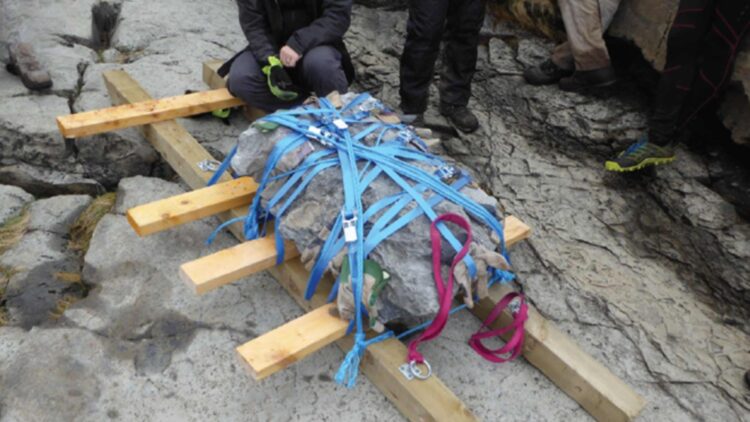Even though it has been a long time since the first dinosaur was found, a new discovery is bound to make the news, as they still remain some of the most interesting creatures that we have knowledge of. Fossils are a very tangible way that we can use to connect to our planet’s past and scientists go through a lot of hurdles to excavate new evidence of our prehistoric ancestors. The latest dinosaur found is a little herbivore from the Middle Jurassic period that was buried in the Isle of Skye in Scottland.
The Jurassic period seems to be one of the best known periods in dinosaur history due to movies such as Jurassic Park or Jurassic World being box office blockbusters, but despite the public’s fondness for these creatures, there is still a lot that gets misconstrued and that we are not aware of when it comes to dinosaurs. Since the remains are so old, it does not matter how much information we have gathered in the past, it is always incomplete and there are many things that we will never know unless our technology advances beyond our wildest dreams, but that is why finding another piece of the puzzle is always an exciting moment in history.
The new dinosaur discovery and what it means for the scientific community
Despite the many remains that we have, this is the first skeleton that has been found in quite a long time. It was in a very remote location, where access is still very complicated, and it was not as easy as just dusting off some dirt, the skeleton was embedded in hard limestone along the coast of the Isle of Skye, which made it quite hard to retrieve.
Form the information that we have, we can surmise that this new dinosaur fossil belonged to a young member of the species and was more likely than not a full herbivore. It is the size of a large dog and may be the oldest fossil of its kind ever found. This is not a lot of information to go on, but scientists are happy to wait a little longer to dig their teeth into this new discovery to ensure that it is done right and that we can get as much information as possible, especially considering the ordeal that they went through to retrieve this specimen.
Because of its location, the retrieval process was a hard one. The Isle of Skye is considered a protected Site of Special Scientific Interest (SSSI), which is both an excellent thing and a very frustrating thing. It is excellent as it allows for very good preservation of the area, but really frustrating when trying to get a permit to remove a dinosaur skeleton from its shore. It was worth the wait, as it also gave time for researchers to put an action plan in place to ensure that nothing went wrong when they tried to dislodge the rock.
The fossil had to be removed under very challenging conditions and required precise timing with the tide. Because the skeleton was encased in solid limestone along the shoreline, the extraction involved a combination of ropes, wedges, and assistance from a motorboat stationed offshore. Once freed, the entire rock-embedded specimen was carefully transported by boat to a secure location at the port for further examination.
This is where the preliminary conclusions were reached, like declaring its size and its diet as a herbivore, but also that the specimen likely had sturdy legs that it used to move around. Soon enough we will know more about this fascinating creature and we cannot wait to see it on display one day.

